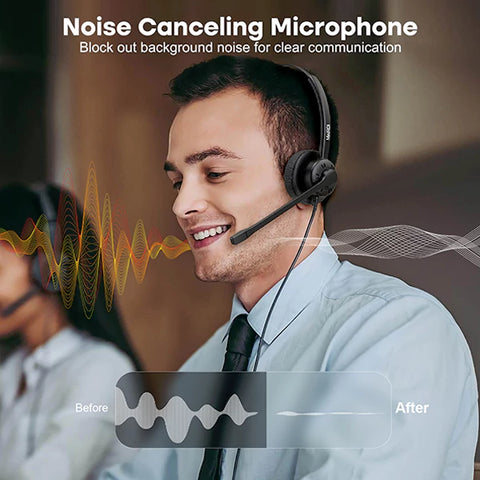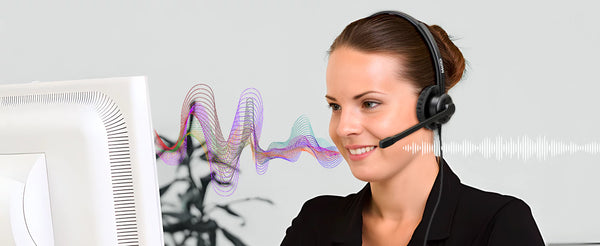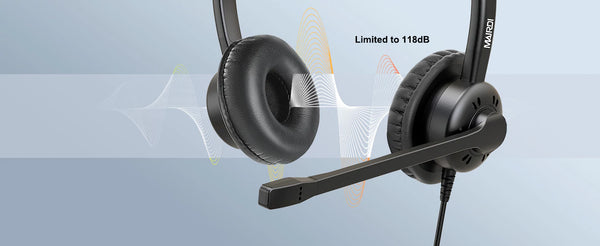
Noise-cancelling headphones have become increasingly popular for their ability to block out unwanted sounds and provide a more immersive listening experience. But how exactly do they work?
Understanding the Technology
Noise-canceling audio devices use a built-in microphone to analyze the ambient sound waves around you and generate the opposite sound waves to reduce surrounding sound. Noise-cancelling devices have a built-in microphone which produces the opposite reversed sound waves to neutralize surrounding noise.

Do noise Cancelling headphones actually cancel noise?
Yes, noise-cancelling headphones do indeed cancel noise, but the extent to which they do so can vary depending on factors such as the quality of the headphones, the technology used (active or passive noise cancellation), and the type of noise being canceled. Active noise-canceling headphones use built-in microphones to analyze ambient sound waves and generate opposite sound waves to cancel out background noise effectively. However, they may not eliminate all noise completely, especially sudden or irregular sounds. Passive noise isolation, on the other hand, relies on the physical design of the headphones to block out external noise without active technology. Overall, while noise-canceling headphones can significantly reduce background noise, they may not completely eliminate it in all situations.
Active Noise Cancellation
The key technology behind noise-canceling headphones is called active noise cancellation (ANC). ANC works by using microphones to pick up external sounds, such as traffic noise or chatter, and then generating sound waves that are precisely out of phase with the detected noise. When these out-of-phase sound waves combine with the original noise, they cancel each other out, effectively reducing the overall volume of the unwanted sound.
Passive Noise Isolation
In addition to active noise cancellation, many noise-canceling headphones also feature passive noise isolation. This involves physical barriers, such as ear cups or ear tips, that block out external noise by forming a seal around the ears. Passive noise isolation helps to further reduce ambient sound, particularly at lower frequencies, and can enhance the effectiveness of active noise cancellation.

Benefits of Noise Canceling Headphones
There are several benefits to using noise-canceling headphones:
1. Improved Concentration: By blocking out distractions, noise-canceling headphones can help you focus on your work, studies, or music without being disturbed by external sounds.
2. Enhanced Audio Quality: With reduced background noise, you can enjoy clearer and more detailed audio, whether you're listening to music, podcasts, or audiobooks.
3. Reduced Stress: Constant exposure to loud or distracting noises can contribute to stress and fatigue. Noise-canceling headphones provide a quieter environment, promoting relaxation and comfort.
4. Better Communication: Noise-canceling headphones with built-in microphones allow for clearer voice calls and virtual meetings by reducing background noise during conversations.

Are noise Cancelling headphones safe?
Contrary to concerns, noise-canceling headphones are generally safe for your hearing and health, as they primarily work to block out external noise rather than emitting harmful radiation. How to know which volume is moderate? A helpful guideline will assist you in this situation.
Determining a moderate volume level depends on various factors, including the individual's hearing sensitivity, the environment, and the duration of listening. Here are some general guidelines to help gauge moderate volume levels:
1. Comfortable Listening: Set the volume at a level where you can comfortably hear the audio without straining or feeling discomfort. It should be loud enough to hear clearly but not so loud that it causes discomfort or pain.
2. Background Noise: Adjust the volume to compensate for background noise. In a quiet environment, you may need to lower the volume to avoid overpowering sound. In a noisy environment, you may need to increase the volume slightly to hear clearly.
3. Speech Recognition: If you're listening to spoken content, such as podcasts or audiobooks, adjust the volume so that speech sounds natural and clear. You should be able to distinguish individual words without difficulty.
4. Hearing Protection: As a general rule, if others can hear the audio from your headphones when you're wearing them, the volume is likely too high. Aim to keep the volume at a level where it's audible to you but not to others nearby.
5. Duration of Use: Consider the length of time you'll be listening. Lower volume levels are generally safer for extended listening sessions, especially if you're using headphones for several hours at a time.
6. Use Volume Limiting Features: Many devices and headphone models offer volume-limiting features that restrict the maximum volume output. Enabling these features can help prevent excessive volume levels.
7. Regular Breaks: Regardless of the volume level, take regular breaks from listening to give your ears a rest. This can help prevent fatigue and reduce the risk of hearing damage over time.
By following these guidelines and listening at a comfortable, moderate volume level, you can enjoy your audio content safely while minimizing the risk of hearing damage. If you're unsure about the appropriate volume level, err on the side of caution and choose a slightly lower volume setting.

Choosing the Right Noise Canceling Headphones
When selecting noise-canceling headphones, consider factors such as comfort, battery life, audio quality, and connectivity options. Look for reputable headset brands known for their effective noise cancellation technology and read reviews from other users to find the best option for your needs.
In conclusion, noise-canceling headphones work by analyzing and neutralizing ambient sound waves, providing a quieter and more enjoyable listening experience. Whether you're working, traveling, or simply relaxing at home, noise-canceling headphones can help you block out distractions and immerse yourself in your favorite audio content.





